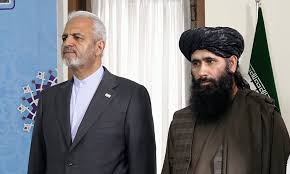
Renewable energy continues to grow faster than fossil fuels worldwide despite policy reversals in the United States, with global oil demand likely to peak “around 2030,” according to a new report by the International Energy Agency (IEA).
In its 2025 World Energy Outlook, released Wednesday, the Paris-based agency presented multiple scenarios for the global energy landscape — marking its first major publication since facing criticism from U.S. President Donald Trump’s administration over its forecasts for declining fossil fuel demand.
“The pace varies, but renewables grow faster than any other major energy source in all scenarios, led by solar photovoltaics,” the IEA stated in its 518-page report.
Even under a scenario in which U.S. policy shifts lead to 30% less renewable energy capacity by 2035 compared with last year’s projections, the IEA said global renewable deployment will continue its “rapid expansion.”
The report coincides with the UN COP30 climate summit in Belém, Brazil — a gathering notably boycotted by the Trump administration, which has withdrawn from the Paris Climate Accord and pledged to revive oil and gas production while dismantling clean-energy initiatives enacted under former President Joe Biden.
The IEA’s latest outlook attempts to strike a delicate balance amid U.S. political pressure. Washington’s Energy Secretary, Chris Wright, has even threatened to withdraw U.S. participation in the agency unless it reforms its methods and assumptions.
Three Scenarios, Divergent Futures
The IEA outlined three core scenarios:
Current Policies Scenario (CPS) — assumes no new policy changes. Under this, global oil and gas demand would rise 16% by 2035 and continue increasing through 2050. Critics have branded this projection as politically motivated.
Stated Policies Scenario (STEPS) — reflects current and announced government commitments. Under this model, oil demand peaks around 2030, declines to 100 million barrels per day by 2035, and falls steadily thereafter.
Net Zero Emissions Scenario (NZE) — envisions a pathway to limit warming to below 1.5°C by 2100, requiring a rapid global shift to renewables and clean technologies.
In all scenarios, China remains the dominant force in renewable expansion, projected to account for 45–60% of global growth over the next decade. Rising demand for electricity — driven by artificial intelligence, data centers, and increased air conditioning use — continues to accelerate the global energy transition.
Climate Goals Slipping Further Out of Reach
Despite these gains, the IEA warned that no current pathway fully meets the Paris Agreement’s 1.5°C target.
Under existing policies, global temperatures are projected to exceed 2°C by 2050 and reach nearly 2.9°C by 2100. Even in the STEPS scenario, warming would rise above 2°C by 2060 and continue to 2.5°C by century’s end. Only in the Net Zero scenario does warming peak at 1.65°C before gradually declining below the critical 1.5°C threshold.
“There is less momentum than before behind national and international efforts to reduce emissions, yet climate risks are rising,” the IEA cautioned.
‘Trump’s Dystopian Energy Future’
Environmental advocates say the new outlook underscores both progress and peril.
“The IEA has confirmed that no single country can halt the clean energy transition — with oil and coal demand peaking by 2030 under its base-case scenario,” said David Tong, Global Industry Campaign Manager at Oil Change International.
“But this year’s report also exposes Donald Trump’s dystopian energy future — one that drags the world back toward fossil-fuel dependence, pollution, and runaway climate chaos,” he added.



